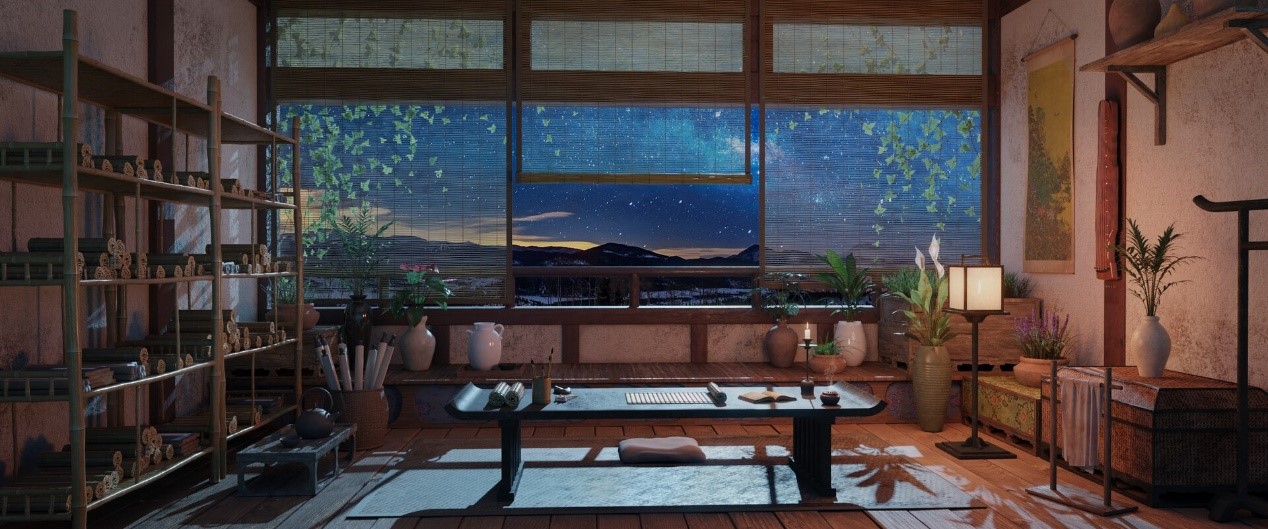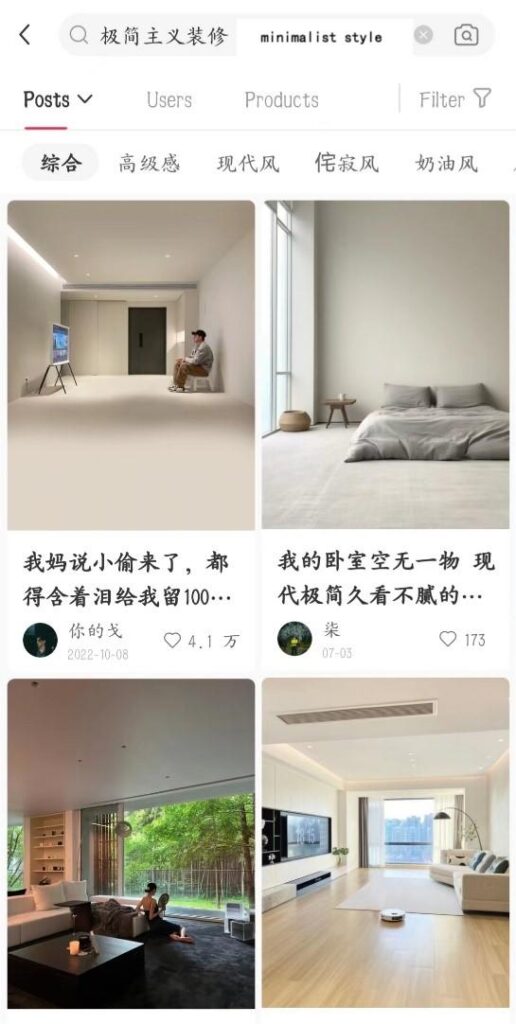In 2022, the global interior design market reached RMB 770 billion, with China contributing significantly at RMB 157 billion, accounting for approximately 20.4% of the global market. This growth has been accompanied by the emergence of market segmentation untapping new opportunities in China’s interior design market.
Download our report on how young Chinese Consumers are Finding Themselves

Interior design boasts a long history in China
China’s modern home decoration market draws inspiration from its rich history of interior design. The roots of interior design in China trace back to ancient times, notably during the Han Dynasty (25–220 AD) and Tang Dynasty (618-907 AD). During these periods, interior design in China reflected the power and social status of the Chinese elite. One remarkable feature was the height of furniture, which symbolically elevated individuals in society. For example, during the Tang Dynasty, furniture artisans crafted high round and yoke back chairs exclusively for the affluent elite.

Minimalism is a prevalent interior design trend in China
As time goes on, Chinese people have higher requirements for interior design, and society’s aesthetic needs increase. Nowadays, Chinese furniture has shifted its focus to functionality, comfort, and artistic expression. Chinese consumers now enjoy a wide variety of furniture styles and choices, with the influence of global design trends.
Contemporary Chinese interior design prominently features minimalism as a prominent style choice, emphasizing efficient space utilization to create open and inviting atmospheres that offer relaxation and tranquility amid urban life’s hustle and bustle. Notably, Scandinavian minimalism, popularized by Ikea, has significantly influenced this design trend. Moreover, a local version of minimalism is emerging in China, drawing inspiration from its rich traditions and cultural heritage. That is the case of furniture design brand PUSU whose furniture incorporates ancient Chinese literati lifestyle into modern environments.

Goldmantis (金螳螂) drives the trend toward environmentally friendly interior design
In the early 2000s, foreign dominated the interior design industry in China and influenced the local consumers’ tastes. However, domestic brands are giving them a run for their money. Among them, Goldmantis (金螳螂) has been actively involved in advocating for environmentally conscious interior design, earning recognition among consumers. Over time, as awareness among Chinese consumers about the environmental impact of brands has increased, Goldmantis has responded by actively incorporating sustainable materials, energy-efficient technologies, and eco-conscious design principles into their projects. In 2022, the total turnover of Goldmantis reached 21.8 billion RMB, with the net profit reaching 1.3 billion RMB. Moreover, it was ranked first in “Comprehensive Data Statistics of China’s Building Decoration Industry in 2021” in the decoration and design category for 20 consecutive years.

In line with the Chinese government’s strong emphasis on environmental protection and green development, Goldmantis’ commitment to sustainability is well-placed. This alignment has also facilitated the company’s involvement in the expanding market for environmentally conscious housing and construction projects. Since 2017, Goldmantis has been identified as the first batch of companies in the “National Prefabricated Construction Industry Base” by the Ministry of Housing and Urban-Rural Development.
China’s interior design market set to embrace visual technology and AI
The integration of visual technology and artificial intelligence (AI) into interior design is reshaping interior design in China. According to Fastdate, in 2020, approximately 19.2% of enterprises operating within the Chinese interior design market underwent a digital transformation. Prominent Chinese brands such as Red Star Macalline (红星美凯龙) have leveraged 3D model rooms, smart displays, and lighting design to enhance the visual experience.

In addition, AI ntegration in building design processes can optimize spatial layouts. Using algorithms, smaller rooms can be visually expanded, creating the illusion of spaciousness. This innovative approach, often referred to as “augmented reality architecture,” leverages AI to analyze factors such as room dimensions and lighting conditions. It then generates virtual enhancements that make the space more open and welcoming.
Moreover, AI can also assist in personalized interior design by analyzing user preferences, lifestyle patterns, and cultural influences. By leveraging data, AI algorithms can suggest design elements, color schemes, and furniture arrangements tailored to individual needs, creating spaces that resonate with individual needs.
Interior design brands in China are already utilizing artificial intelligence
In China, a number of well-known interior design companies have already begun implementing AI. For example, Kujiale (酷家乐) has set up a laboratory to study AI design generation in various fields, including home remodeling, commercial spaces, and real estate building. Similarly, Sunvega (三维家), a Chinese company, entered this domain in 2018, spearheading the integration of artificial intelligence (AI) technology into home renovation design, under the leadership of Cao Jian, the director responsible for 3D product development. Over time, the brand has accumulated substantial knowledge and data in this domain, unveiling several AI-related applications that significantly enhance their services.
What you cannot miss about China’s interior design market?
- Interior design in China vaunts a long history, dating back to the Han Dynasty (25–220 AD) and Tang Dynasty (618-907 AD). At that time, it was a means to signal social status and political power.
- Nowadays, Chinese furniture has shifted its focus to functionality, comfort, and artistic expression.
- Scandinavian furniture has played a key role in cultivating a local taste for minimalism in China. Homegrown interior design brands are now proposing their own way to minimalism, drawing inspiration from the country’s rich traditions and cultural heritage.
- Currently, domestic brands dominate China’s interior design market. Goldmantis (金螳螂), a leading Chinese interior design company, has led the trend towards eco-friendly design and won over environmentally conscious Chinese consumers.
- The incorporation of visual technology and artificial intelligence (AI) is reshaping the Chinese interior design market, and this trend is likely to persist in the future.





